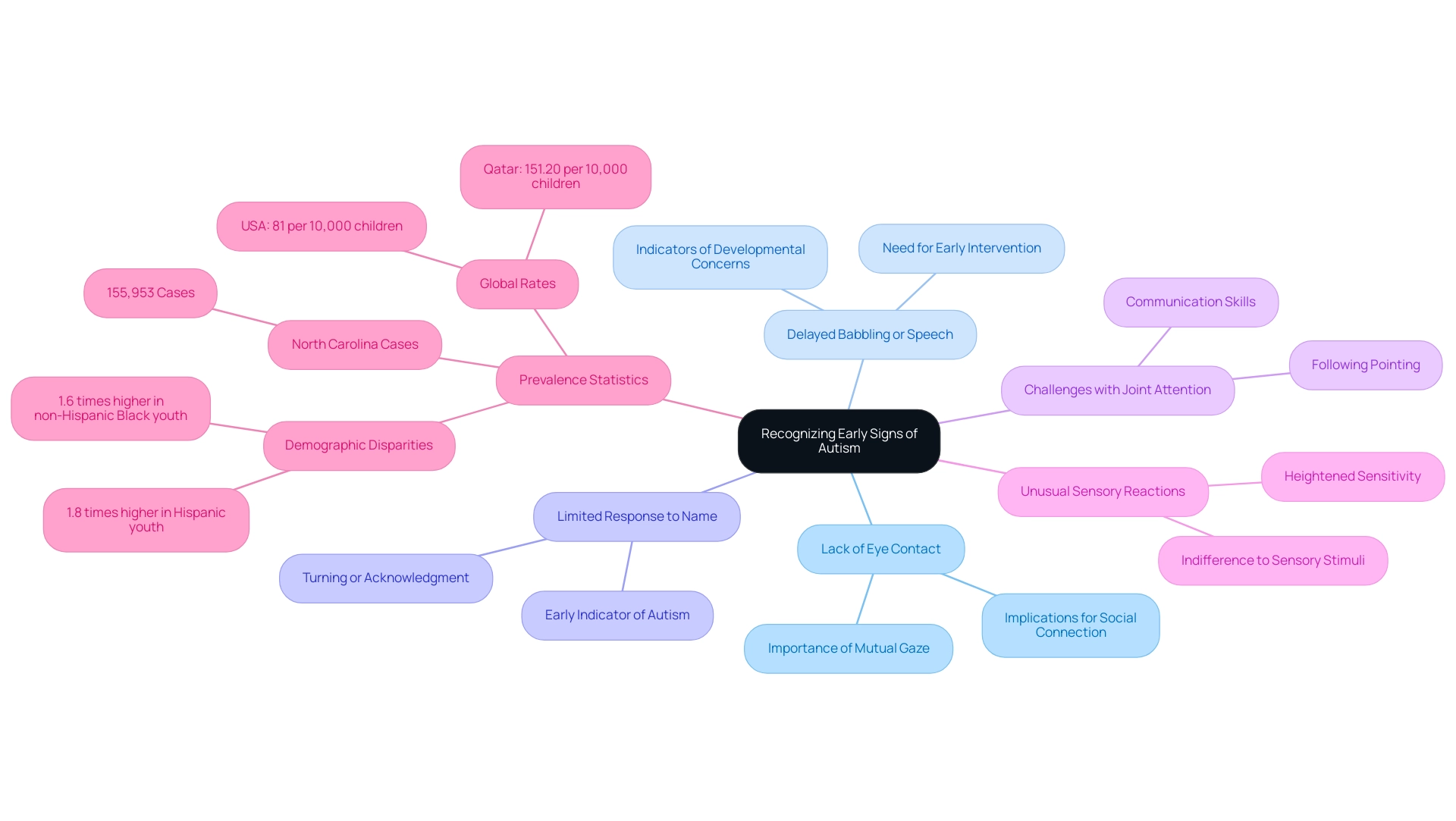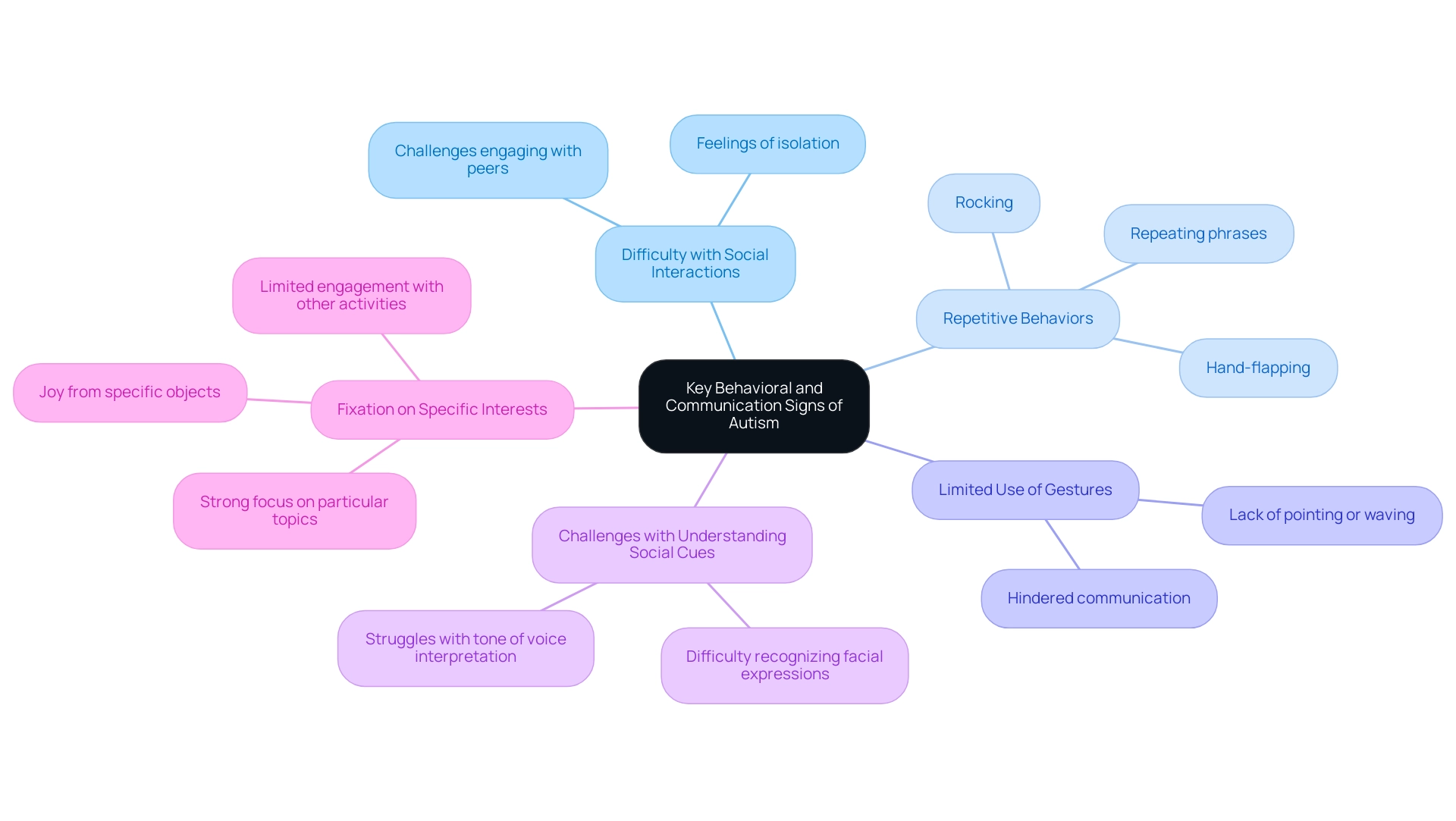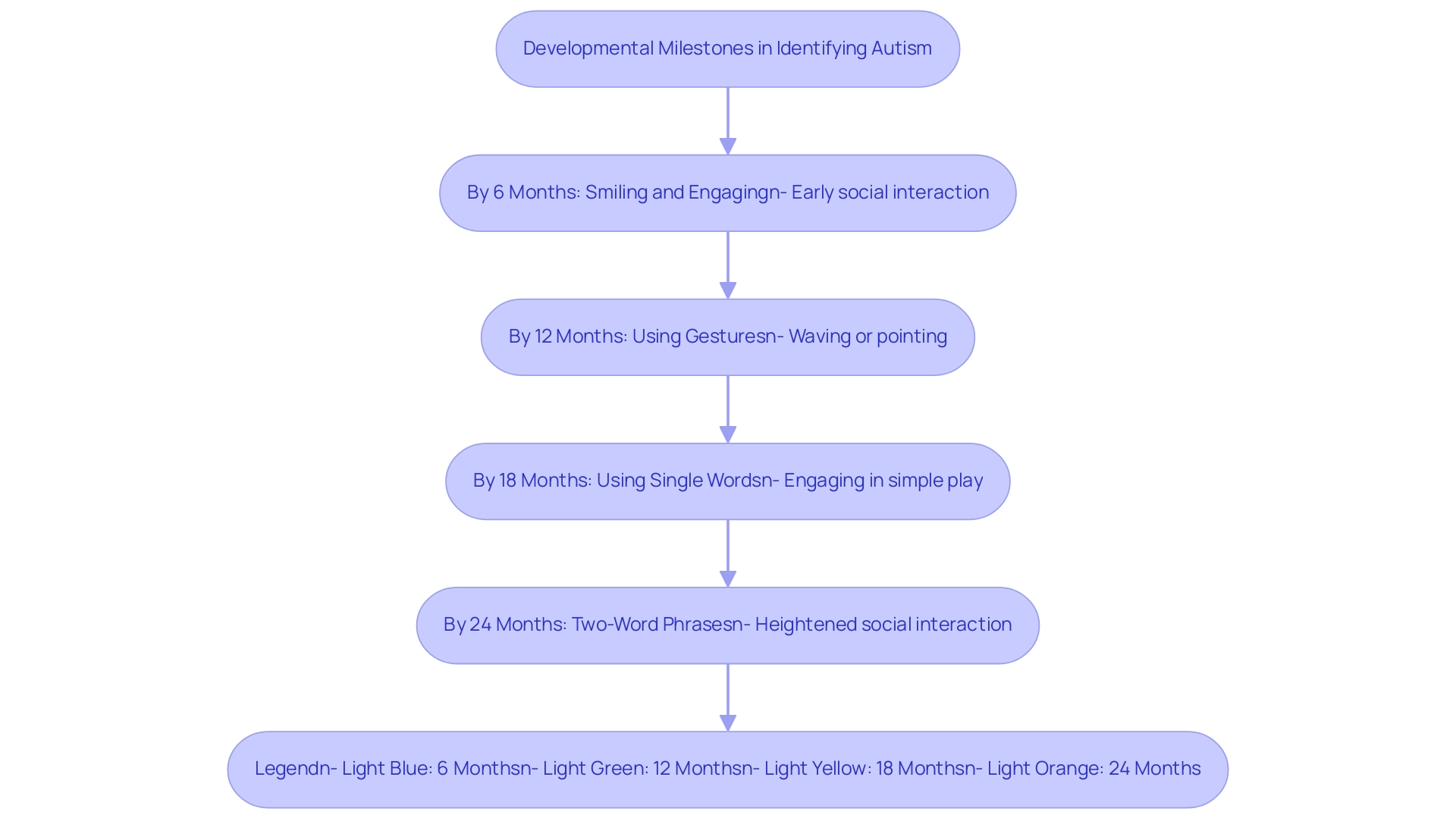Introduction
In a world where every child's journey is unique, understanding Autism Spectrum Disorder (ASD) becomes paramount for parents seeking to advocate effectively for their children. With the prevalence of autism on the rise, knowledge of its signs, characteristics, and the importance of early intervention can make a significant difference in the lives of families.
This article delves into the essential aspects of autism, from recognizing early signs in infants and toddlers to understanding key behavioral indicators that can inform timely assessments. By empowering parents with insights into developmental milestones and the steps to take when seeking professional help, this guide aims to illuminate the path toward effective advocacy and support, ensuring that every child has the opportunity to thrive.
Understanding Autism: A Brief Overview
Autism Spectrum Disorder (ASD) is a complex developmental condition marked by distinct challenges in social interaction, communication, and the presence of repetitive behaviors. Notably, recent statistics reveal a male-to-female prevalence ratio of 3.8 across various monitoring sites, with a range of prevalence rates indicating significant variability across different ADDM sites. This highlights the necessity for awareness among guardians.
Each person with ASD exhibits a distinct range of skills and difficulties, emphasizing the significance of customized assistance. As emphasized in the 2020 report by Williams AR, "Prevalence and Characteristics of Autism Spectrum Disorder Among Children Aged 8 Years — Autism and Developmental Disabilities Monitoring Network, 11 Sites, United States, 2020," understanding autism is vital for parents, as early recognition of its signs can lead to significantly improved outcomes through timely intervention and support. For instance, a case study from Wisconsin noted that 808 individuals were identified with ASD, with 581 receiving a developmental evaluation by age 36 months.
The evaluation rate for individuals with IQ ≤70 was 57.5%, compared to 82.2% for those with IQ >70, suggesting that early intervention strategies are particularly effective for individuals with higher IQ scores. Additionally, it is important to recognize that the average ages of diagnosis and first intervention vary widely between states, which can impact the effectiveness of support strategies. By understanding the signs of autism, parents can prepare themselves to advocate effectively for their offspring's needs and access suitable resources, paving the way for a brighter future.
Recognizing Early Signs of Autism in Infants and Toddlers
As supporters of our young ones' well-being, it's essential to be alert to the early signs of autism and other developmental disorders in infants and toddlers. Recent studies highlight the alarming reality that 155,953 cases of autism are reported in North Carolina alone, underscoring the importance of early intervention. Here are several key signs to monitor:
-
A lack of eye contact in infants can be one of the signs of autism, as they may struggle to engage in mutual gaze, which is vital for social connection. Recognizing the signs of autism can help in understanding children's developmental needs.
- Signs of autism may include a limited response to their name – Watch for whether your little one turns or acknowledges when called; a lack of response can be an early indicator.
-
It is important to recognize the signs of autism in children.
- Delayed Babbling or Speech – Noticeable delays in typical cooing or babbling sounds can be considered as signs of autism, indicating developmental concerns. There are various signs of autism that can help in identifying the condition early.
-
Children who do not follow where others point or look may exhibit signs of autism, reflecting challenges with joint attention, an important aspect of communication.
- It is important to recognize the signs of autism early for better support. Some infants may exhibit unusual reactions to sensory experiences, such as heightened sensitivity or indifference to sounds, lights, or textures, which can be considered signs of autism.
Recognizing these symptoms early empowers caregivers to seek guidance and support, paving the way for effective interventions. A recent study emphasizes that doing well is possible even when a young person continues to meet the criteria for ASD, reinforcing the idea that proactive measures can lead to positive outcomes. With the prevalence of developmental disorders being notably higher among Hispanic youth (1.8 times) and non-Hispanic Black youth (1.6 times) compared to their non-Hispanic White counterparts, it’s essential for all parents to be informed and proactive.
Furthermore, global statistics reveal that countries like Qatar report the highest diagnosed rates of the condition at 151.20 per 10,000 children, while the United States falls within the global range at around 81 per 10,000 children. This highlights the disparities in autism diagnosis and reporting practices across different regions. Moreover, it's essential for social workers to be informed to assist caregivers in organizing and guiding them through each phase of the planning process.
Together, we can advocate for the needs of our young ones and ensure they receive the support they deserve.

Key Behavioral and Communication Signs of Autism
Identifying the essential behavioral and communication signs of autism is vital for parents supporting their offspring. Here are some of the most common indicators:
- Difficulty with social interactions: Many young individuals with this condition may find it challenging to engage with peers or adults, resulting in feelings of isolation.
- Repetitive behaviors: This can manifest in various ways, such as hand-flapping, rocking, or repeating phrases, which are often coping mechanisms for sensory overload or stress.
- Limited use of gestures: Children may not point, wave, or utilize other hand signals, which can hinder their ability to communicate effectively with others.
- Challenges with understanding social cues: A significant aspect of the condition is the difficulty in recognizing facial expressions or interpreting tone of voice, making social interactions even more complex.
- Fixation on specific interests: Many children may develop a strong focus on particular topics or objects, which can be a source of joy but may also limit their engagement with other activities.
Understanding the signs of autism is not just about identification; it empowers parents to assess their offspring's behavior more effectively and seek appropriate support. According to the latest statistics, approximately 81 out of every 10,000 young individuals in the United States are diagnosed with a developmental disorder, highlighting the importance of awareness and early intervention. In addition, the body of research surrounding autism has grown significantly, with the number of peer-reviewed articles increasing from 800 in 2003 to 3,400 in 2013, underscoring the importance of understanding the signs of autism.
As highlighted by Autism Parenting Magazine, mothers often emphasize professional qualities and support groups, while fathers place more importance on assistance with the autistic youth or teen’s social development. By promoting a nurturing atmosphere and linking with resources, guardians can advocate effectively for their offspring's needs and welfare. Furthermore, the evolving conversation around autism representation is illustrated by the shift from traditional symbols like the puzzle piece to more inclusive symbols, such as the rainbow infinity sign, which promotes a positive representation of the autistic experience.

The Role of Developmental Milestones in Identifying Autism
Understanding developmental milestones is vital for parents advocating for their offspring's growth and well-being. These milestones serve as critical indicators of a young person's progress, and recognizing the signs if autism early can assist in identifying potential concerns. A study has shown variability in the age at which autistic individuals attain key developmental milestones compared to their siblings, underscoring the importance of monitoring these milestones.
Here are key milestones to monitor:
- By 6 months: Your child should be smiling and engaging with others, showing early social interaction.
- By 12 months: Look for the use of gestures such as waving or pointing, which indicate growing communication skills.
- By 18 months: At this stage, individuals typically begin to use single words and engage in simple play, showcasing cognitive development.
- By 24 months: Anticipate observing two-word phrases and heightened social interaction, indicating a young one's developing language abilities and social awareness.
If you notice signs if autism in your offspring, and they are not meeting these milestones, it may warrant further evaluation. Studies indicate that early intervention can significantly improve a young person's development and overall well-being. For instance, a recent study titled "Discussion on Developmental Milestone Variability" highlighted that co-occurring intellectual disabilities can extend the timeline for developmental milestones, while the age at which youngsters begin to walk does not differ significantly between those with and without intellectual disabilities.
As Alycia Halladay, PhD, from the Autism Science Foundation, notes, 'Understanding these developmental benchmarks is crucial for effective advocacy and support.' Empowering yourself with this knowledge can lead to timely action that positively influences your offspring's journey.

When to Seek Professional Help: Diagnosis and Assessment
When parents have worries that their offspring may be on the spectrum, it is essential to take proactive measures by seeking professional assistance. The following signs may indicate the need for a consultation with a healthcare provider:
- Ongoing concerns about social interactions or communication skills. Notable signs if autism can include patterns of repetitive behaviors or intense interests in specific topics.
- Delays in reaching developmental milestones compared to peers may indicate signs if autism.
- A family history of neurodevelopmental disorders or related developmental disorders.
Professional assessments typically encompass both developmental screening and comprehensive evaluations.
According to recent guidelines set forth by Hudry et al., early diagnosis is pivotal. It opens the door to effective intervention strategies that can be customized to meet the unique needs of the child, significantly enhancing their development and overall well-being. In fact, statistics reveal that many families are increasingly seeking professional assistance for developmental disorder diagnosis, especially during the COVID-19 pandemic.
Significantly, 31.3% of caregivers started seeking solutions such as CBD, emphasizing the urgency for families to find effective assistance during difficult times. This trend highlights the significance of prompt and knowledgeable decisions regarding assessment of the condition. Furthermore, as highlighted by healthcare providers, addressing the unmet assistance needs of parents, including the importance of self-care and relaxation, is essential in navigating this journey.
Additionally, advancements in genetic screening and the need for equitable access to care, as noted in the case study 'Future of ASD Screening and Diagnosis,' further illustrate the evolving landscape of autism assessment. Ensuring that every child receives the support they need is vital for a brighter future.
Conclusion
Understanding Autism Spectrum Disorder (ASD) is essential for parents who wish to advocate effectively for their children. The article highlights the significance of recognizing early signs of autism, such as:
- Lack of eye contact
- Limited response to names
- Difficulties with joint attention
By being vigilant and informed, parents can seek timely interventions that lead to better outcomes for their children.
Additionally, the discussion on key behavioral and communication signs sheds light on the unique challenges faced by children with autism. By identifying behaviors such as:
- Difficulty in social interactions
- Repetitive actions
Parents are empowered to understand their child's needs and pursue appropriate resources. The emphasis on developmental milestones further reinforces the need for monitoring progress, as early recognition can prompt necessary evaluations and interventions.
Finally, knowing when to seek professional help is crucial. The article underscores that early diagnosis opens the door to tailored intervention strategies, enhancing a child's development and quality of life. Parents are encouraged to take proactive steps, ensuring they have the support and resources needed throughout this journey.
Equipped with knowledge and awareness, parents can become strong advocates for their children, fostering an environment where each child can thrive. In a landscape where understanding and support are paramount, the proactive engagement of parents can lead to brighter futures for children on the autism spectrum.
Frequently Asked Questions
What is Autism Spectrum Disorder (ASD)?
Autism Spectrum Disorder (ASD) is a complex developmental condition characterized by challenges in social interaction, communication, and the presence of repetitive behaviors.
What is the male-to-female prevalence ratio of ASD?
The male-to-female prevalence ratio of ASD is 3.8, indicating that ASD is more commonly diagnosed in males than in females.
Why is early recognition of ASD important for parents?
Early recognition of ASD signs is vital because it can lead to significantly improved outcomes through timely intervention and support.
What are some signs of autism to look for in infants and toddlers?
Key signs of autism include a lack of eye contact, limited response to their name, delayed babbling or speech, not following where others point, and unusual reactions to sensory experiences.
How does IQ affect the evaluation and intervention rates for individuals with ASD?
The evaluation rate for individuals with an IQ ≤70 is 57.5%, while it is 82.2% for those with an IQ >70, suggesting that early intervention strategies are particularly effective for individuals with higher IQ scores.
What is the significance of understanding autism for parents?
Understanding autism helps parents advocate effectively for their child's needs and access suitable resources, which can lead to better support and outcomes.
What does the prevalence of autism look like in North Carolina?
In North Carolina, 155,953 cases of autism have been reported, highlighting the importance of early intervention.
How do global statistics on autism diagnosis vary?
Countries like Qatar report the highest diagnosed rates of autism at 151.20 per 10,000 children, while the United States has a diagnosis rate of around 81 per 10,000 children, indicating disparities in diagnosis and reporting practices.
What disparities exist in autism prevalence among different racial groups?
The prevalence of developmental disorders is notably higher among Hispanic youth (1.8 times) and non-Hispanic Black youth (1.6 times) compared to their non-Hispanic White counterparts.
What role do social workers play in supporting caregivers of children with ASD?
Social workers assist caregivers in organizing and guiding them through each phase of the planning process, ensuring they receive the necessary support.




